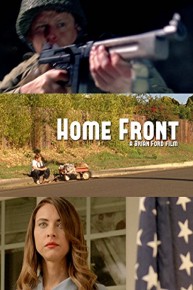
Capture of Boer Battery by the British
Where to Watch Capture of Boer Battery by the British

Capture of Boer Battery by the British is a brief but historical cinematic piece that was crafted in the early months of 1900. It was a silent black-and-white film showcasing the depth and intensity of the Anglo-Boer War, offering audiences a glimpse into the grim, harsh realities of warfare. Created by Robert W. Paul, one of the pioneers of British cinema, the movie marked an early attempt at understanding and portraying war as a serious, realistic documentary subject.
The movie, which only lasts two minutes, is distinct in its approach in centralizing around a particular episode – the capture of a Boer artillery unit by British forces. Despite the constraints of filming and technology of the era, the film went beyond the scope of simple fabrication, and actual members of the British forces were cast to carry out the reenactment. Their grounded, authentic performances added a level of realism, making the sequences incredibly impactful.
In Capture of Boer Battery by the British, the viewers are placed on the front lines of conflict, witnessing the firm and strategic advances of the British troops towards the Boer's artillery position. The meticulous approach showcases the gap between the two sides distinctly - the disciplined, uniformed forces against the less regimented, yet highly passionate Boer soldiers. It depicts how a potent, brutal showcase of force from the British overpowered the Boer's relentless defence.
The film is constructed in a series of shots – from medium to wide – presenting soldiers marching, running, and diving into trenches. The short film's main strength lies in its ability to build tension and atmosphere within minimal runtime. The progression of the troops, their stances, their reactions to resistance, and finally, the moment of capture, all dynamically unfold without dialogue or dramatic music.
Due to its nature as a period piece, the film serves as an indispensable artifact reflecting the raw energies and tension of the times. The silent film phenomenology is felt throughout the images showing dust clouds from marching soldiers or cannon shots, the flash of rifles, and the movements of the battle scene. Despite the absence of dialogue, the silent expressions, movements, and body languages of the soldiers evoke a plethora of unspoken narratives.
Paul's cinematographic choices are also worthy of note. In an era when film cameras were static, the use of panning shots to follow the advancing British soldiers was innovative and added dynamism to the scenes. The camera work, albeit rudimentary compared to contemporary standards, was pivotal in highlighting the narrative progression and intensity of battlefield engagements.
Capture of Boer Battery by the British had no formally structured narrative, but it was an early attempt at encapsulating an ongoing, violent event and presenting it for audiences at home and abroad. It catered to the public's increasing curiosity and concern about the war and the men fighting it. The movie, albeit short and silent, stands strong as an historical account of the Anglo-Boer War and the early days of war cinematography.
Suffice to say, Capture of Boer Battery by the British is more than a war reenactment; it’s an artifact that sheds light on an important historical event. The film gives audiences an idea of the complexities of war, the sacrifices made, and above all, offers a glimpse into movie making at the dawn of the 20th century. It remains a compelling example of early cinematic prowess, demonstrating the power of visual storytelling and the potential of cinema as a historical replicator and propagator.
Capture of Boer Battery by the British is a Drama, Short movie released in 1900. It has a runtime of 1 min. Critics and viewers have rated it mostly poor reviews, with an IMDb score of 4.6..





















